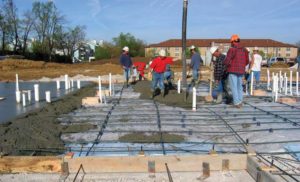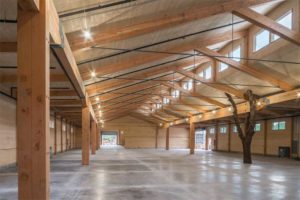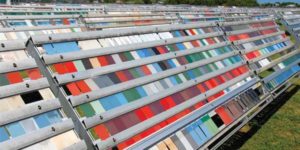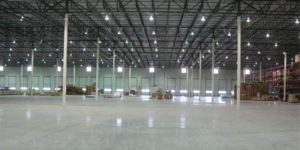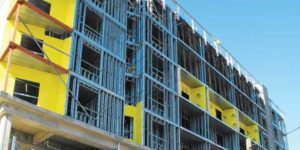This article is about prescriptive specifications and focuses on 100-mm (4-in.) interior concrete slab on grade for schools, offices, hospitals, libraries, and other commercial buildings that will receive moisture-sensitive or bonded floorcoverings.
+ Read More
|
Mass timber—specifically cross-laminated timber (CLT)—continues to spread across the nation as an alternative to traditional concrete and steel construction. CLT panels are described as large-scale, predesigned, and highly engineered for precise tolerances.
+ Read More
|
It is incumbent on designers and specifiers to develop an increasingly sophisticated understanding of how various products and materials impact the environment.
+ Read More
|
Concrete has long reigned as the material of choice for many structural floors, but inherent difficulties with its use continue to be a source of disputes on construction projects.
+ Read More
|
A long, winding driveway in Bluffton, South Carolina, weaves through expansive maritime forest marshland full of live oaks and long-leaf pines before it opens onto the secluded Palmetto Bluff community.
+ Read More
|
Cold-formed steel (CFS) has been available in construction for more than a century, but some specifiers, architects, engineers, and other building professionals do not yet understand the full range of the material’s benefits and applications.
+ Read More
|
U.S. engineering firm Thornton Tomasetti has been selected to complete the structural design for Vrindavan Chandrodaya Mandir—a New Delhi temple that will, on completion, be the tallest religious structure in the world.
+ Read More
|
Moisture presence in concrete slabs can cause problems for all types of floors, including carpeting, wood, stone, poured polymeric, and resilient finish. Too much moisture can cause floorcoverings to cup, buckle, blister, and discolor, and these problems can occur days, months, or years after installation.
+ Read More
|
Moisture presence in concrete slabs can cause problems for all types of floors, including carpeting, wood, stone, poured polymeric, and resilient finish.
+ Read More
|
Construction documents need to be clear, concise, correct, and complete—but is this enough to fend off the twists and turns of executing the contract for construction?
+ Read More
|
|
|


